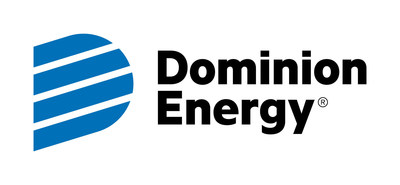Dominion Energy Reaches Major Milestone in Construction of Charybdis, the First Jones Act-Compliant Offshore Wind Turbine Installation Vessel
- Charybdis, the first Jones Act-compliant offshore wind turbine installation vessel, was successfully launched at the Seatrium AmFELS shipyard in Texas.
- The vessel's construction milestone supports the current Coastal Virginia Offshore Wind (CVOW) construction schedule.
- Over 1,200 workers were employed during the peak construction phase of the vessel.
- The vessel is designed to handle turbine sizes of 12 megawatts or larger, marking a significant advancement in offshore wind technology.
- The vessel launch marked a historical achievement as the world's largest completed lift totaling 23,000 tons.
- The CVOW project received a final construction air permit from the Environmental Protection Agency, allowing offshore monopile installation to begin in May.
- None.
Insights
The construction and launch of the Charybdis, a significant asset in the offshore wind energy sector, represents a notable step forward in the domestic energy infrastructure. The vessel's impact on the industry is multifaceted; it signifies not only an advancement in renewable energy capacity but also a stimulus in the local economy through job creation. A thorough analysis indicates that this project will potentially increase Dominion Energy’s operational capabilities for offshore wind projects.
Moreover, the mention of the vessel being Jones Act-compliant is crucial, as it delineates a vessel that can legally transport between U.S. ports, which is a regulatory requirement that often poses limitations for the shipping and energy industries. This compliance could afford Dominion a competitive edge in the burgeoning U.S. offshore wind market. Stakeholders should note that the introduction of the Charybdis may accelerate the growth of the offshore wind sector and could possibly lead to reductions in logistical costs, thereby impacting profitability projections for companies like Dominion Energy positively in the long-term.
The Coastal Virginia Offshore Wind (CVOW) project’s receipt of its final federal permit is another important juncture, informing a regulatory environment that is becoming increasingly conducive to the development of renewable energy projects. From a policy standpoint, the completion of this vessel and its implications for CVOW project timelines may encourage legislators to push for more supportive policies, incentivizing renewable energy development.
Advancements like these often lead to a ripple effect, potentially shaping future energy policies and infrastructure investments. Stakeholders could witness an uptick in legislative activity aimed at facilitating similar projects. This can translate into a more predictable regulatory climate, which is often a green light for investors looking for stability in the clean energy sector.
The environmental impact of this progression cannot be overstated. The shift towards sustainable and clean energy sources, such as offshore wind, is expected to have a positive effect on the environment by reducing reliance on fossil fuels. The CVOW project, aided by the Charybdis, is poised to contribute to a reduction in greenhouse gas emissions.
An environmental economist would posit that aside from the direct environmental benefits, there are likely to be associated economic benefits such as improved public health and associated reductions in healthcare spending due to decreased pollution. However, the upfront costs and potential environmental disruption during the construction phase must be weighed against these long-term benefits. Nonetheless, projects like CVOW signify an investment in not only the energy but also the environmental future of the region.
- Charybdis successfully launched to water at Seatrium AmFELS shipyard in
Brownsville, Texas consistent with project expectations - No change to the vessel's timeline which supports the current Coastal Virginia Offshore Wind (CVOW) construction schedule
- CVOW receives final federal permit; expects to begin monopile installation in coming weeks
"Charybdis is vital not only to CVOW, but also to the growth of the offshore wind industry along the
The 472-foot vessel is being constructed at the
"Seatrium's AmFELS shipyard has partnered with Dominion Energy in this ground-breaking project to supply the first
The vessel's hull and infrastructure was fabricated with more than 14,000 tons of domestic steel, with nearly 10,000 tons sourced from Alabama, West Virginia and North Carolina suppliers. The vessel is designed to handle turbine sizes of 12 megawatts or larger. The vessel launch marked a historical achievement as the world's largest completed lift totaling 23,000 tons.
Also announced today, the CVOW project received a final construction air permit from the Environmental Protection Agency. This is the 11th and final federal permit required to begin offshore construction. Offshore monopile installation begins in May.
About Dominion Energy
About 6 million customers in 15 states energize their homes and businesses with electricity or natural gas from Dominion Energy (NYSE: D), headquartered in
![]() View original content to download multimedia:https://www.prnewswire.com/news-releases/dominion-energy-reaches-major-milestone-in-construction-of-charybdis-the-first-jones-act-compliant-offshore-wind-turbine-installation-vessel-302116744.html
View original content to download multimedia:https://www.prnewswire.com/news-releases/dominion-energy-reaches-major-milestone-in-construction-of-charybdis-the-first-jones-act-compliant-offshore-wind-turbine-installation-vessel-302116744.html
SOURCE Dominion Energy








